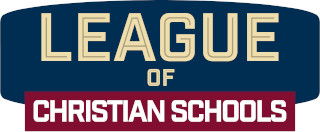Surviving the Epidemic
We know that all of us are feeling the pinch of school closings. Many have lost jobs and many schools are laying off employees. Many Christian schools opt out of Unemployment taxes, so teachers cannot collect that.
What options exist for paying employees and school bills?
There are two possible funding streams available, but you need to be ready to act QUICKLY!

Families First Coronavirus Response Act
Families First Coronavirus Response Act may help. While we are still awaiting guidance that will be provided by April 2, the act covers:
- 2 weeks paid leave for medical quarantine
- 2 weeks paid leave for bona fide need to care for an individual subject to quarantine
- Up to 10 weeks paid leave if an employee, who has been employed for at least 30 calendar days, is unable to work due to a bona fide need for leave to care for a child whose school or child care provider is closed or unavailable for reasons related to COVID-19.
This law allows the government to reimburse the employer for such expenses based upon their calculation model. There are stipulations.
Please note, the DOL’s guidance appears to suggest that if employers send home workers and stop paying them, these workers are not entitled to paid sick leave or expanded family and medical leave if the “employer closes [the] worksite for lack of business or because it is required to close pursuant to a Federal, State, or local directive.” This would be true whether the closure occurs before or after April 1, the effective date of the law, and even if workers requested leave prior to the closure.
Coronavirus Aid, Relief, and Economic Security (CARES) Act
On March 25, 2020, the United States Senate passed the Coronavirus Aid, Relief, and Economic Security (CARES) Act – legislation that would provide an unprecedented and massive array of relief, benefit, and stimulus measures designed to help Americans, including nonprofits (churches and Christian schools and preschools) amid the coronavirus crisis.
Be Ready to Apply for the New PPP/SBA Loan
A major benefit is the $349 billion Paycheck Protection Program (PPP), designed to help employers keep their employees on payrolls. The PPP delegates its loan and grant-making to the existing national network of lenders in the popular Section 7(a) business loan guarantee program of the Small Business Administration (SBA). This PPP is a brand-new program of the SBA (distinguished from its disaster relief and other programs) and still awaits its new policy guidance and loan application requirements (hopefully this week). Until then, you can get ready to apply as follows.
|
|
|
|
|
|


